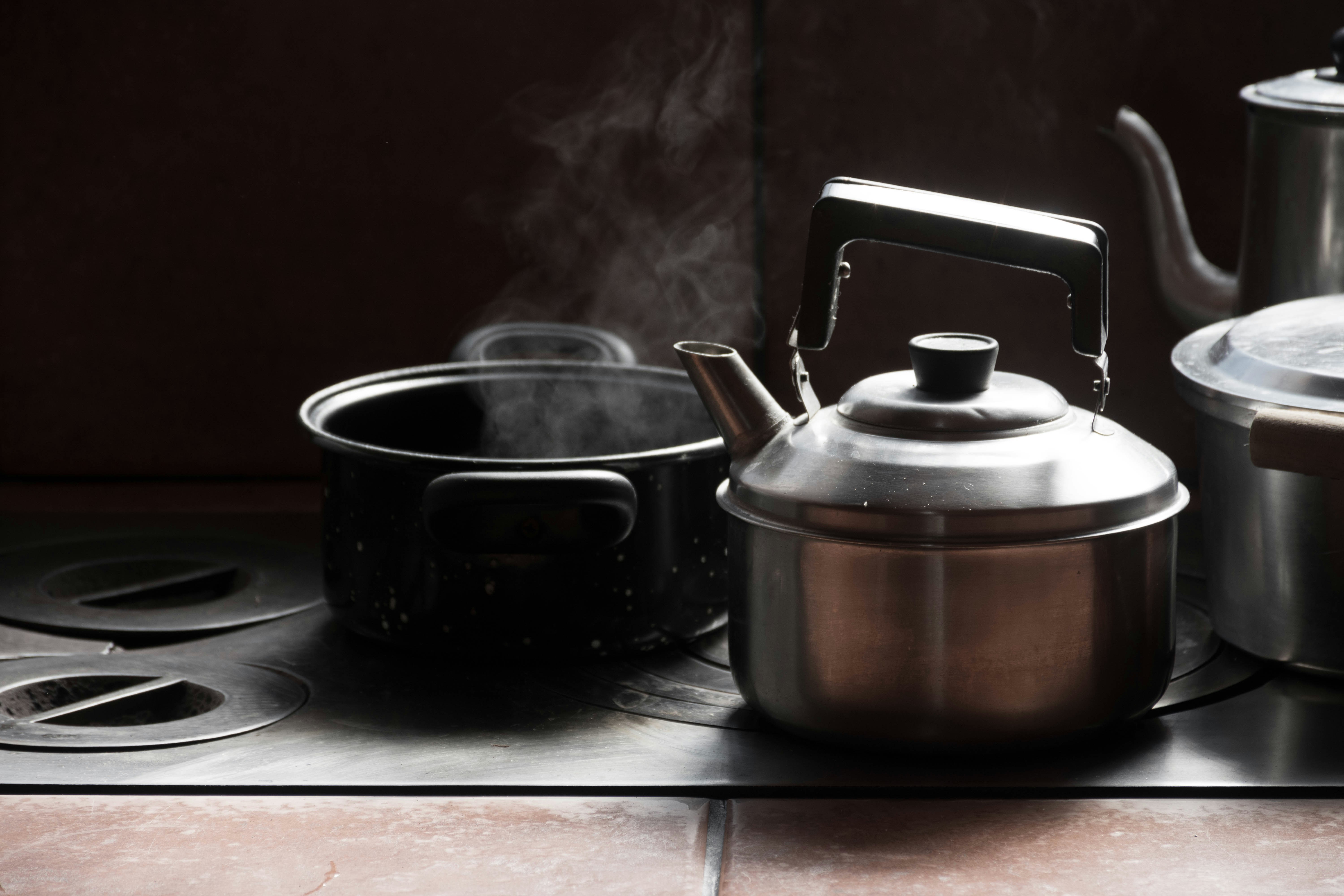Culinary Alchemy: Transform Everyday Ingredients into Gourmet Wonders
Ever stared at your kitchen and thought, “I have nothing to cook?” Join the ranks of culinary wizards who turn mundane ingredients into gastronomic delights through the fascinating realm of chemical reactions! Culinary alchemy combines science and creativity, making it possible to craft gourmet dishes from the simplest of staples. You might be amazed at how a bit of knowledge about flavor chemistry can elevate your cooking to new heights and spark your culinary imagination.
Understanding Culinary Alchemy

Culinary alchemy refers to the transformative process that occurs when two or more ingredients interact on a molecular level during cooking. Just as alchemists sought out to change lead into gold, we can create stunning, flavorful dishes from everyday items in our pantry through understanding these interactions. The magic lies in understanding how heat, acidity, and time unlock the potential of your ingredients, turning a basic meal into a feast worthy of fine dining.
The first step in this alchemical journey is to fully embrace the variety of cooking techniques—braising, grilling, stewing, baking, and so much more. Each method introduces unique chemical reactions that can dramatically enhance flavor profiles and textures. Allowing ingredients to interact can yield complex results, turning humble items like cabbage into tangy sauerkraut or creating a rich caramel from sugar through the Maillard reaction.
The Science Behind Flavor

To understand culinary alchemy, one must grasp the science of flavors. Taste isn't just about what hits your tongue; it involves a complex interplay of aroma, texture, and even sound. In fact, studies show that colors in food can influence our perception of flavor, while pairing the right sounds with your meal can sharpen its appeal. For instance, if you're curious about the relationship between cooking and sound, consider reading more about how you can elevate your cooking with sound.
When you cook, the ingredients undergo various chemical changes, such as fermentation, caramelization, and proteolysis. Fermentation, for example, not only enhances flavors but also increases the bioavailability of nutrients. This transformative process illuminates how something as simple as yogurt or sourdough bread can be both nutritious and a flavor powerhouse. Are you keen on mastering fermentation? Discover the art of fermentation for bold flavors and give your dishes a professional edge.
Essential Techniques for Transforming Ingredients

Several techniques stand out in the realm of culinary alchemy. Understanding these methods is crucial for transforming your meals into gourmet experiences.
Caramelization: The Sweet Science

One of the most beloved transformations is caramelization, a process where sugar is heated and turns into a rich, brown syrup bursting with flavor. This reaction not only adds sweetness but introduces complexity through deeper flavors. A simple onion can be elevated into a sweet, rich accompaniment for a host of dishes simply by cooking it until it's golden brown.
Emulsification: Creating Harmony

Another essential technique is emulsification—the process of combining two liquids that typically do not mix, such as oil and vinegar. The result is a creamy, luscious dressing or sauce full of flavor. Mastering emulsions can elevate even the simplest salad to a sophisticated dish. Dabble in dressing-making and explore the flavor balance in your dishes by checking out savory science and flavor pairing.
The Role of Acidity

One of the most overlooked aspects of culinary alchemy is the role of acidity in enhancing flavors. A splash of acid—whether lemon juice, vinegar, or even yogurt—can brighten up a dish and balance richness. Consider classic preparations, such as tomato sauce made with fresh basil and a hint of balsamic vinegar, where acidity effectively lifts the other ingredients.
Moreover, acidity can also catalyze certain chemical reactions. For instance, when you marinate meats in an acidic solution, enzymes break down proteins, leading to tender, flavorful results. For those curious to tap into nostalgia, look at how ingredients come together. Need recipes inspired by your childhood? Explore ideas from dishes inspired by your favorite songs and let the familiar flavors guide your cooking.
A Culinary Journey: Experiment with Flavors

Applying the principles of culinary alchemy is an invitation to experiment. Each culinary journey is unique, and the beauty lies in flavor discovery. Don’t shy away from playing with contrasts—sweet vs. salty, spicy vs. cooling, crunchy vs. creamy. For instance, mango salsa—a vibrant medley of sweet mango, zesty lime, and aromatic cilantro—exemplifies a thrilling flavor contrast.
Consider the geographical influences on flavors as well. You can travel the world through your palate! If you're intrigued by cultural culinary flair, explore diverse street food inspirations in your own kitchen. A vibrant and robust meal can be as easy as bringing global street food into your home cooking. Cooking is not just a skill; it's a gateway to understanding and experiencing new cultures.
Transforming Leftovers: Culinary Gold

What about those ingredients gathering dust in your pantry? Transforming leftovers into gourmet fare is one of the most remarkable feats of culinary alchemy. A little creativity can breath life into yesterday's meal. Think of repurposing leftover vegetables into a fragrant frittata or old bread into a savory bread pudding.
Leveraging Unique Ingredients for Alchemy

Don't forget to delve into the world of unique ingredients, especially when exploring sustainable cooking. Wild foraging can reveal flavors you’ve never imagined. Foraging for ingredients allows you to revive old recipes with modern twists while connecting with the earth and understanding true seasonality. Plus, you can easily discover surprising delights, so don’t miss out on foraging for wild ingredients!
Exploring ancient grains and heirloom varieties can also expand your repertoire. Grains like quinoa, farro, and freekeh not only contribute textures but also pack nutritional benefits that current diets often overlook.
Creating a Mindful Cooking Practice
Cooking is not only about following recipes; it’s an experience that can center our thoughts and ignite our creativity. The act of preparation, mindful engagement in the process, and the appreciation of ingredients can transform ordinary cooking into a form of artistry. Establishing a mindful cooking practice invites you to enjoy cooking as an immersive experience. Find ways to craft meals that are not only nourishing but meaningful. Transform your kitchen into a sanctuary with mindful meal prep.
The Taste of Emotion: Cooking with Sentiment
Incorporating emotions into cooking can yield incredible results. Have you ever noticed how certain scents trigger memories? Harness the power of nostalgia by creating dishes that evoke good times from your past. The aroma of your grandmother's kitchen or the flavors of your favorite summer vacation can come alive with the right ingredients and a little inspiration. Discovering how to cook using emotion to craft comfort food is truly delightful.
Engaging All Five Senses
As you embark on this journey, remember to engage all five senses. Cook pieces of food that are visually appealing, have interesting textures, and are paired with sounds that complement your meals. Your kitchen should resonate with joy and harmony. Whether it’s the sizzle of meat hitting a hot pan or the crunch of fresh vegetables, every aspect plays a crucial part in your alchemical creations. You can explore the importance of sensory engagement in cooking further with resources on unlocking flavor with sensory cooking.
A well-rounded meal radiates with color too! Seasonal cooking can ensure you serve vibrant plates year-round. Dive into the philosophy of cooking by color, and let the hues of your raw and cooked ingredients delight not only your taste buds but your eyes too.
Finding Your Flavor Signature
Every chef has a unique flavor signature—an ingredient or combination that embodies their style. Experimenting with herbs, spices, and condiments to find your “go-to” elements can make your cooking distinctly personal. This journey of flavor discovery can begin with simple taste tests at home. Try using combinations you’ve never mixed before, and take note of what resonates. It is this curiosity that can turn your kitchen work into a culinary lab.
Final Thoughts
Embrace the enchanting world of culinary alchemy! It’s time to take control of your kitchen. Whether you’re a seasoned home cook or a novice, the magic of transforming everyday ingredients into gourmet wonders awaits you. By understanding the science and techniques behind cooking, you can create not just meals, but unforgettable sensory experiences.
As you embark on your culinary explorations, remember that mistakes are often fantastic teachers. Don’t hesitate to experiment and allow your creativity to flourish. You're on an exciting path toward developing new palate pleasures—one chemical reaction at a time. Seek out new ideas and challenge your imagination, leading your culinary adventures into delicious uncharted territories.
Keep stirring that pot of culinary alchemy, and let’s see what gourmet wonders you can create next!



